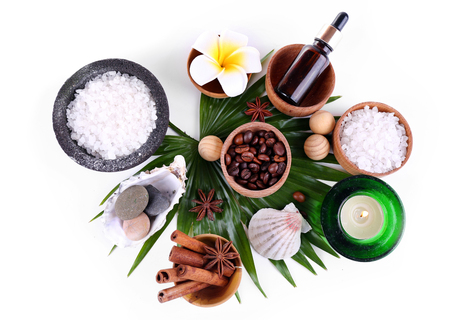Understanding Sun Tan and Skin Spots in Indian Skin Types
India’s unique climate, marked by intense sunlight, high humidity, and long summers, has a direct impact on the skin health of its people. Sun tan and pigmentation issues are particularly prevalent among Indians due to frequent sun exposure and the country’s predominantly tropical environment. Indian skin, which ranges from wheatish to deep brown tones, is naturally more prone to hyperpigmentation and uneven skin tone compared to lighter complexions. The strong UV rays not only darken the skin but also lead to stubborn spots and patches that can be difficult to treat with conventional remedies.
In this context, Ayurvedic solutions have gained immense popularity among Indian consumers. Ayurveda, rooted in centuries-old Indian wisdom, focuses on holistic healing by addressing the root cause of skin concerns rather than offering temporary fixes. The use of natural herbs like turmeric (haldi), sandalwood (chandan), aloe vera, and saffron (kesar) resonates deeply with local beliefs about purity and wellness. These ingredients are not only easily accessible but also trusted for their safety and efficacy in treating sun-induced damage.
With rising awareness about the long-term side effects of chemical-based products, urban and rural consumers alike are increasingly seeking out Ayurvedic options for managing sun tan and pigmentation. This shift is further driven by the desire for gentle yet effective remedies tailored to Indian skin types, making Ayurveda a preferred choice in both household skincare routines and trending e-commerce categories.
2. Ayurveda 101: Traditional Wisdom for Skin Concerns
Ayurveda, the ancient Indian system of wellness, is deeply rooted in the country’s cultural heritage and offers holistic solutions to modern skin issues such as sun tan and dark spots. At its core, Ayurveda believes that health and beauty stem from a balance among the three Doshas—Vata, Pitta, and Kapha—which govern our physical and mental constitution. Skin problems like tanning and pigmentation are often seen as signs of Dosha imbalance, particularly an aggravated Pitta due to excessive sun exposure or harsh environmental factors.
Understanding Doshas and Skin Types
| Dosha | Skin Characteristics | Tanning & Spot Proneness |
|---|---|---|
| Vata | Dry, thin, prone to flakiness | Uneven tone, dullness after sun exposure |
| Pitta | Sensitive, fair, prone to redness | Easily tanned, frequent dark spots and pigmentation |
| Kapha | Oily, thick, cool to touch | May develop stubborn spots; less prone to quick tanning but pigmentation can persist |
The Ayurvedic Approach to Sun Tan & Spots
Ayurvedic remedies focus on restoring balance by using natural herbs, oils, and kitchen ingredients sourced locally across India. Age-old treatments incorporate ingredients like turmeric (haldi), sandalwood (chandan), aloe vera (ghritkumari), neem, and licorice (mulethi) which are well-known in Indian households for their cooling, healing, and skin-brightening properties. These remedies not only address visible symptoms but also work at a deeper level by detoxifying the body and pacifying aggravated Doshas. This approach ensures long-term radiance rather than just short-lived results.
Cultural Connection: More Than Just Remedies
Ayurveda’s popularity in India is not just about efficacy—it is a lifestyle passed down through generations. From grandmothers’ ubtan recipes during festivals like Holi and Diwali to daily rituals of applying coconut oil before stepping out in the sun, these practices are woven into the fabric of Indian living. Choosing Ayurvedic remedies is more than a beauty routine; it’s embracing a piece of Indian tradition while nurturing your skin naturally.
![]()
3. Top Ayurvedic Ingredients for Tan Removal and Spot Fading
India’s ancient beauty wisdom celebrates a range of potent ingredients that have been trusted for generations to combat sun tan and skin spots. These Ayurvedic heroes are not only natural but also deeply rooted in Indian culture, making them safe and effective choices for daily skincare.
Turmeric (Haldi): The Golden Glow Giver
Turmeric, or haldi, is perhaps the most iconic ingredient in Indian households. Known for its anti-inflammatory and antibacterial properties, turmeric is widely used in pre-wedding rituals like the “haldi ceremony” to brighten and purify the skin. For tan removal, mix haldi with curd or milk to create a simple face pack. It helps lighten pigmentation and reduces dark spots when used regularly.
Sandalwood (Chandan): The Soothing Skin Healer
Sandalwood, or chandan, holds a sacred place in Indian tradition. Its cooling nature makes it ideal for calming sunburnt skin and fading stubborn tans. Chandan powder mixed with rose water forms a fragrant mask that soothes irritation and gradually diminishes brown spots. Many Indian families store sandalwood sticks to freshly grind paste during summers—an age-old ritual that still holds its charm.
Aloe Vera: The Universal Skin Saviour
Aloe vera has become a global skincare staple, but its roots run deep in Indian Ayurveda. Easily grown in home gardens, aloe vera gel is applied directly on tanned areas to hydrate, heal, and repair damaged skin. Its regular use helps reduce redness and evens out patchy skin caused by sun exposure—making it a must-have during India’s harsh summers.
Manjistha: The Ayurvedic Complexion Enhancer
Manjistha (Indian Madder) is highly regarded for its blood-purifying qualities. In Ayurveda, it is known to enhance complexion and fade dark spots from within. Manjistha can be used as an herbal powder mixed with honey or yogurt, creating masks that target pigmentation and promote clear, radiant skin.
Usage Tips & Cultural Wisdom
While these ingredients are powerful alone, many Indian women combine them in DIY masks for enhanced results. Always patch test before full application to avoid sensitivity. Incorporating these traditional remedies into your routine isn’t just about skincare—it’s about reconnecting with India’s rich heritage of self-care rituals passed down through generations.
4. DIY Home Remedies vs. Ready-to-Buy Ayurvedic Products
When it comes to tackling sun tan and skin spots in India, consumers often find themselves at a crossroads: Should they stick to the time-tested nuskhe passed down by their grandmothers or embrace the convenience and innovation of modern Ayurvedic skincare brands? Both approaches have their own merits and unique appeal for Indian shoppers seeking effective solutions that align with local culture and values.
Classic Grandma’s Recipes: The DIY Approach
Traditional home remedies, such as using haldi (turmeric), besan (gram flour), dahi (curd), and aloe vera, are deeply embedded in Indian households. These methods are seen as pure, natural, and free from chemicals—qualities that resonate with those who value authenticity and holistic wellness. Preparing these mixes is often a ritual, connecting generations and evoking nostalgia. However, DIY remedies can be time-consuming, messy, and sometimes inconsistent in results due to variations in ingredients or application methods.
Trending Ayurvedic Skincare Brands: Ready-to-Buy Convenience
On the other hand, ready-to-buy Ayurvedic products from brands like Forest Essentials, Biotique, Kama Ayurveda, and Khadi Natural have surged in popularity online. These products promise the same traditional benefits but with added convenience and standardisation. They cater to urban Indians who seek efficacy without sacrificing their busy schedules. The rise of e-commerce platforms like Nykaa and Amazon India has made accessing these brands easier than ever.
Comparing DIY vs. Ready-to-Buy: What Do Consumers Really Want?
| DIY Home Remedies | Ready-to-Buy Ayurvedic Products | |
|---|---|---|
| Authenticity | High – Traditional recipes trusted for generations | Varies – Depends on brand credibility and transparency |
| Convenience | Low – Requires time and effort to prepare | High – Ready to use anytime |
| Cost | Low – Uses easily available kitchen ingredients | Medium to High – Premium pricing for branded products |
| Efficacy | Inconsistent – Results may vary per individual/application | Consistent – Standardised formulations offer predictable results |
| Cultural Connection | Strong – Evokes nostalgia and family bonding | Evolving – Modern interpretation of traditional wisdom |
The Online Shopping Perspective: Balancing Tradition & Modernity
Indian consumers increasingly search for both authenticity and convenience online. Many buyers check product ingredient lists for familiar herbs like neem, tulsi, and chandan before making a purchase. There’s also a growing trend of blending both worlds—using store-bought Ayurvedic face packs alongside homemade masks depending on mood or occasion. Ultimately, whether opting for dadi maa ke nuskhe or trending Ayurvedic serums, what matters most is trust in the remedy’s roots and visible results.
5. Sun Protection the Desi Way: Preventing Future Tan & Spots
When it comes to guarding our skin against the harsh Indian sun, traditional wisdom has always played a crucial role. Long before SPF creams lined store shelves, Indian households relied on Ayurvedic rituals and simple yet effective sun protection hacks. In every region—from the bustling streets of Mumbai to the rural lanes of Tamil Nadu—there’s a treasure trove of desi methods that have stood the test of time.
Natural Oils as Ancient Shields
Many Indian grandmothers still swear by the protective powers of natural oils like coconut, sesame, and almond. Applying a thin layer of these oils not only moisturises but also forms a mild barrier against UV rays. Ayurveda highlights their cooling properties and recommends massaging these oils into the skin before stepping outdoors, especially in peak summer months.
Physical Coverings: The Timeless Approach
Covering up is deeply rooted in Indian culture—not just for modesty, but for health. Lightweight cotton dupattas, wide-brimmed hats, and umbrellas are common sights during sunny afternoons. These physical barriers help prevent direct exposure to sunlight, reducing the risk of tanning and pigmentation while keeping you stylishly protected.
The Modern Importance of SPF
While traditional remedies offer foundational protection, dermatologists now recommend incorporating broad-spectrum SPF into your daily routine. With India’s tropical climate and increasing pollution levels, layering sunscreen with at least SPF 30 is essential—even on cloudy days. Choose formulas infused with Ayurvedic botanicals like turmeric or aloe vera for added benefits suited to Indian skin types.
Desi Wisdom Meets Modern Science
Combining age-old practices with today’s skincare innovations ensures holistic protection for your skin. Use natural oils and coverings as your first line of defence, and seal the deal with a good SPF product before you head out. This hybrid approach is not only effective but also resonates with the growing trend among Indian consumers seeking authenticity alongside efficacy in their beauty routines.
6. Consumer Preferences: What Indian Shoppers Look for in Ayurvedic Solutions
With the rise of digital shopping, Indian consumers—especially Gen Z and millennials—are shaping new trends in Ayurvedic skincare for sun tan and skin spots. Their preferences go beyond just traditional remedies; they seek a blend of ancient wisdom and modern convenience.
Product Trends: Natural, Potent & Purpose-Driven
Today’s shoppers gravitate towards Ayurvedic products that highlight visible results for tanning and pigmentation issues. Ingredients like turmeric (haldi), sandalwood (chandan), saffron (kesar), and aloe vera are hot favourites, often found in serums, gels, and easy-to-use face packs. Formulas promising “100% natural,” “chemical-free,” or “paraben-free” are particularly attractive, as urban consumers grow more ingredient-conscious.
Authenticity Cues: Trust Marks & Transparent Sourcing
Indian buyers look for authenticity signals before clicking ‘buy.’ Certifications such as AYUSH approval, GMP compliance, or ‘Made in India’ labels boost trust. Brands sharing sourcing stories—for example, “wild-harvested neem from Rajasthan”—resonate deeply with value-driven youth. Transparent ingredient lists and clear usage instructions further enhance credibility.
What Convinces Gen Z & Millennials to Buy Online?
This digital-savvy cohort values peer reviews, influencer endorsements, and real-life before-after photos when shopping on e-commerce platforms. Social proof—like high ratings on Nykaa or Amazon India—and user-generated content on Instagram or YouTube are powerful persuaders. They’re also drawn to brands with eco-friendly packaging and cruelty-free claims, aligning with their ethical sensibilities.
Personalisation & Convenience Matter
Customised solutions—like skin type quizzes or virtual consultations—are gaining traction. Subscription models for monthly deliveries of Ayurvedic essentials reflect the demand for hassle-free routines. Ultimately, Indian shoppers want holistic results: radiant skin with reduced tan and spots, achieved through authentic, effective Ayurveda tailored for their fast-paced lives.
7. Frequently Asked Questions & Expert Advice
Is Ayurvedic treatment safe for all skin types?
Ayurvedic remedies are generally considered safe as they use natural ingredients like turmeric, sandalwood, and aloe vera. However, Dr. Neha Sharma, a well-known dermatologist in Mumbai, recommends performing a patch test before full application—especially if you have sensitive or allergy-prone skin. Always consult with an Ayurveda practitioner to personalise your routine.
How long does it take to see results?
Patience is key with Ayurvedic skincare. According to Dr. Rakesh Mishra, an Ayurveda consultant in Delhi, visible improvements in sun tan and pigmentation usually appear after 4–6 weeks of regular use. Natural remedies work gradually, unlike chemical treatments that may offer instant but temporary results.
Which ingredients should I look for in Ayurvedic products?
For Indian skin tones and sun exposure conditions, experts suggest focusing on ingredients like Kumkumadi Tailam, Neem, Lemon, and Saffron (Kesar). These have been used traditionally to reduce tan and lighten dark spots while nourishing the skin. Avoid products with artificial fragrances or parabens—even if labelled ‘Ayurvedic’.
Can I combine Ayurvedic remedies with my regular skincare?
Dr. Anjali Joshi, an Ayurveda beauty expert from Bengaluru, says integrating Ayurvedic masks or oils into your existing routine is safe. Just avoid using strong chemical exfoliants or peels alongside herbal treatments to prevent irritation. Remember: simplicity is central to Ayurveda—less is more!
Do home remedies really work for Indian summer tans?
Many Indian households swear by DIY masks using besan (gram flour), yogurt, and tomato pulp. While these offer mild benefits for fresh tans and spots, expert advice highlights that persistent pigmentation requires consistent care and sometimes professional consultation.
Final Word from Experts
The consensus among Indian Ayurveda practitioners is clear: choose authentic products with transparency about sourcing and formulation. Personalise your approach based on your dosha (body type), lifestyle, and local climate for best results.


